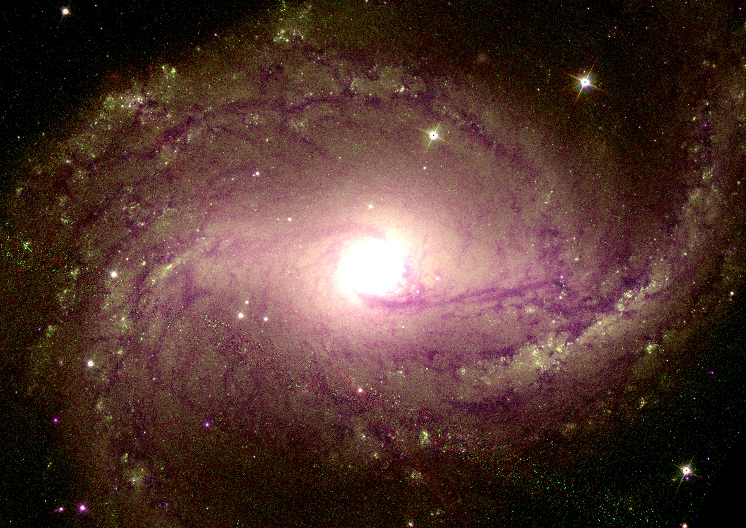

Hello! My name is Mars Bell, and I am a rising junior at the Illinois Institute of Technology, majoring in astrophysics. This summer I worked with Dr. Charlie Kilpatrick as a part of Dr. Wen-Fai Fong's group on determining the mass limits placed on binary companion stars of type II supernovae.
The search for binary star companions left behind at type II supernovae sites is crucial to the understanding of massive stellar evolution as well as binary stellar evolution. Many companion stars have been discovered, but the catalog is far from complete. By looking at images of supernova locations, it can be determined if there is a second star companion left at the site. These images can also reveal key traits of these companion stars, such as magnitude and mass. Some masses of stars cannot exist as companion stars to supernovae.
Massive stars (zero-age main sequence; ZAMS greater than 8 solar masses) are rare, given their short lifespans and that they are produced at lower rates (Salpeter 1955). This scarcity makes them a poorly understood area of research. They are important to the study of the universe as a whole, as they will end up becoming neutron stars, black holes, and most important to this paper, core-collapse supernovae (Burrows, Hayes, & Fryxell 1995).
Binary stars, two stars that are gravitationally bound to each other, are also poorly understood, as they are difficult to observe. However, binary stars systems are abundant, especially for massive stars, with over 70% of massive stars exchanging mass in a binary system (Sana et al. 2012), thus making the two areas of research inseparable. By exchanging mass, these binary stars' evolutionary paths are greatly altered, including the end of those paths (Podsiadlowski, Joss, & Hsu 1992).
Supernovae are a great tool for studying massive stars, as they are a visually prominent final stage in massive star evolution. Supernovae release heavy elements into the universe (Woosley & Weaver 1995), which makes them essential to all areas of research. The conducted survey specifically targets type II supernovae, which are a type of core collapse supernovae.
First, data reduction was done on the collected Hubble Space Telescope (HST) images to produce usable images. HST images are very precise, allowing viewers to resolve individual stars, which was crucial to this project. The data reduction was done with the hst123.py program. Then, each image was examined by eye to determine if there was an object within a radius of 0.2", centering around the coordinates of the supernova. A photometry program was also run on each image to obtain a limiting magnitude on a potential object. These limiting magnitudes were used to obtain absolute magnitudes via the distance modulus. The absolute magnitudes were then compared to the models in order to determine the minimum masses these possible binary stars could have.
Out of the 31 supernovae examined, only 10 were determined to possibly have a binary star companion. It should be noted that of these 10, only 1 supernova took place before 2017. This is may be because the images of newer supernovae actually still show the supernova itself, not a companion star but appearing as such. The legitimacy of these candidate companions has yet to be determined.
Figure 1 below shows which masses of main sequence and post-main sequence stars can be ruled out for a certain fraction of supernovae. For example, main sequence stars above about 8 solar masses can be ruled out for 50% of supernovae. Another notable result is that main sequence stars under about 18 solar masses can be ruled out for all supernovae, meaning that none of the supernovae surveyed can have a companion star above 18 solar masses. There are no post-main sequence stars under 7 solar masses, as those would be too faint to observe (likely white dwarfs).

Discovering that 50% of companion stars cannot be more massive than 8 solar masses is significant, because 8 solar masses stars are how we define massive stars. If 50% of our binary stars aren't massive when we expect them to be, then there's more to be investigated. By discovering these mass limits on companion stars of type II supernovae, this research furthers the collective understanding of massive star and binary star evolution.
This material is based upon work supported by the National Science Foundation under grant No. AST 2149425, a Research Experiences for Undergraduates (REU) grant awarded to CIERA at Northwestern University. Any opinions, findings, and conclusions or recommendations expressed in this material a re those of the author(s) and do not necessarily reflect the views of the National Science Foundation. This research is based on observations made with the NASA/ESA Hubble Space Telescope obtained from the Space Telescope Science Institute, which is operated by the Association of Universities for Research in Astronomy, Inc., under NASA contract NAS 5-26555. These observations are associated with program HST-SNAP-17070. We acknowledge the indigenous people of this land, and those who continue to live here.